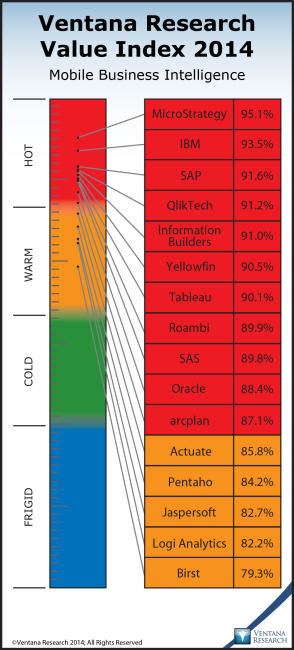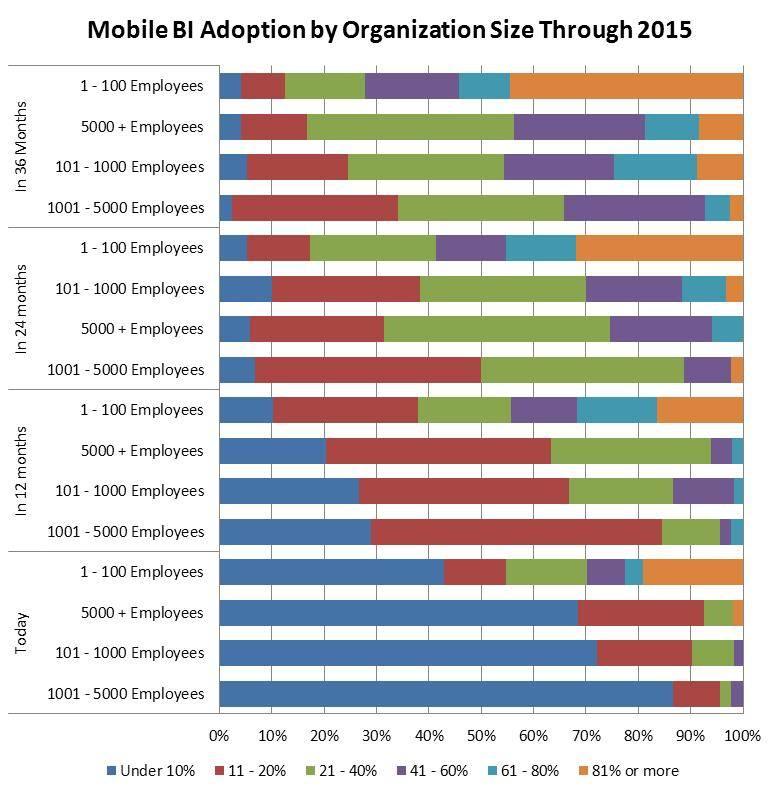Every year, business processes, organisations and industries experience significant transformations that redefine new trends. The emerging of new trends shape industries and the way companies conduct business and realise profits. This essay covers Mobile Business Intelligence (MBI) as an emerging trend in the business intelligence and IT industry.
Issues and Audience
Established IT firms with massive resources and capabilities, such as SAP, SAS, Microsoft, and Oracle among others and start-ups, such as Softwaremaster and Roambi provide both software and hardware to run Business Intelligence (BI) platforms on smartphones, such as Blackberry, iPhone, Android-based phones and other smartphone models.
There are strong needs and interests in BI systems that operate on smartphones. However, all vendors admit that extremely few customers use their smartphones for BI purposes. This is a major challenge for the IT and BI industry.
The use of smartphone for BI purposes goes beyond mere “receiving of alerts or getting pre-determined set of truncated reports” (Marion, 2010). In this regard, BI players should take advantage of the GPS location chips and touch screen features to develop platforms that support real-time data and analytical capabilities. BI systems that run on smartphone could provide real-time information, insights and trends to users wherever they are.
Industry professionals have provided their forecasts about the BI software and hardware adoption. The growth in BI software is likely to benefit retail clerks, physicians and other professionals who will rely on effective use of BI systems and their smart devices. In this regard, smartphones with BI systems will create the biggest change in the industry and increase returns on investment (Marion, 2010).
The Trend
Cosentino noted that Ventana Research completed the most “comprehensive evaluation of mobile business intelligence products and vendors available anywhere by focusing on 16 technology vendors” (Cosentino, 2014). The research firm assessed companies on seven main categories, which included “usability, manageability, reliability, capability, adaptability, vendor validation and TCO and ROI” (Cosentino, 2014). The study categorised vendors based on their abilities to supply software and hardware for MBI (see appendix for categorisation).
The study outcomes indicate significant future trends in the Mobile Business Intelligence. There was a strong desire to enhance the use of data in 40 percent of the firms that took part in the survey. However, adoption of MBI was rather slow relative to interests. Presently, less than half of firms use mobile devices to gain access to BI capabilities. On the other hand, almost three-quarters, which represent 71 percent, assume that their mobile employees would gain access to BI capabilities through mobile devices within the next 12 months (Cosentino, 2014). In addition, the trend in MBI adoption indicated significant support from executives (nearly 50 percent of executives acknowledged the importance of mobility on BI processes).
While there is a wide rift between actual adoption and interests, the existing gap between interests and actual usages will continue to close as many firms turn to mobile devices to facilitate business processes. Whereas penetration of MBI systems remain modest, Howard Dresner (2013) notes that firms of different sizes will continue to adopt MBI significantly by the year 2015 (see appendix). The increasing ease of access and usability shall facilitate the adoption of MBI systems in organisation, but many firms will perhaps not meet their goals of adopting MBI systems by the year 2015.
The use of foresight theory and practices to identify future trends in business processes has allowed firms to adjust their business activities. Foresight relies on gathering previous data to make future prediction and enhance strategic planning among firms. In this regard, technology firms can predict future demands for MBI hardware and software. They can also identify the most active areas in the future and adjust their business activities accordingly.
Therefore, foresight theory and practices help professionals to understand possible future trends for effective business decision-making. However, users must be aware of limitations of future trends as Dresner (2013) notes that firms do not always meet their desires in terms of BI adoptions. Overall, the emerging trend indicates that many firms will adopt MBI for business processes.
Significance
Clearly, today’s mobile employees require mobile devices, which can allow them to gain access to data in a simple, straightforward manner for effective decision-making. Such needs have driven the demand for MBI hardware and software to develop intuitive interfaces. Consequently, vendors and other industry professional need to understand future trends in the market as current studies show that MBI will redefine business practices and increase returns on investments. As a result, several vendors have emerged to fill the gap in demand for MBI software and hardware.
One must recognise that the interest to adopt MBI systems is higher than the actual adoption. Besides, many firms will not meet their adoption plans by specified periods.
This trend also raises important issues about current changes in the IT industry and the need to provide reliable solutions for end users. Therefore, firms must evaluate available MBI options in order to select only tools, which can meet their present and future needs. Companies must also consider their current vendors and understand their plans on MBI systems and mobility.
Reference List
Cosentino, T 2014, Mobile Business Intelligence: Who is Hot in 2014?. Web.
Dresner, H 2013, Dresner Study Reveals High Expectations for Growth of Mobile Business Intelligence. Web.
Marion, L 2010, Nine Emerging Trends in Business Intelligence Software. Web.
Appendix

